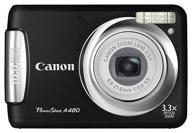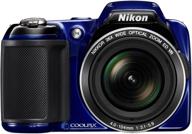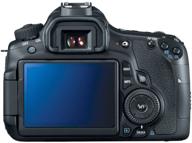
Review on Sony a7 Full-Frame Mirrorless Digital Camera - Body Only: Unleashing Professional Imagery by Michael Jennings

Probably the best value for money in 2017
As this camera has been available for years and has been tested to the last screw, I am writing a review specifically based on my personal experience with this camera. I hope this review gives you an idea of what it's like to live with this camera every day. What I write may or may not relate to how others may or may not use this camera, but I hope it contributes to people's overall understanding of what they are buying.1. Why I chose this camera. After using Nikon APS-C system cameras for ten years, I encountered system performance barriers at higher frequencies as I grew as a photographer. The most common problem I encountered was limited dynamic range. After looking at many image samples, reviews and tests of the Sony a7 series, Pentax K-1, as well as Nikon and Canon full-frame cameras, I decided on the a7 due to the combination of an excellent sensor, compact body and very reasonable price decided. Having used the Samsung NX300 as my second camera for several years, I wasn't completely new to mirrorless cameras, so I wasn't afraid to switch from DSLR to mirrorless cameras.2. Operation and use of the camera.a. Picture quality. When I picked up the a7 camera, its diminutive size (much smaller than my APS-C Nikon D7000 and only slightly larger than the Samsung NX300) was a revelation. In terms of size, the camera reminded me a lot of the Nikon FM-10 and Olympus OM-2000 film cameras. The quality of the image I got from the camera was better than I could have imagined - I almost never had files with blurry highlights and there was so much data in the raw files to play with.b. Handling: After a decade of using Nikon's interface, switching to Sony's multi-page tab system and a few months of using the camera was still pretty disappointing. Another frustration I have with this camera is the inability to move the spot metering area with the focus point. The a7's layout and user interface appears optimized for use of matrix metering and automatic focus point detection when the photographer uses the exposure compensation wheel to make adjustments. It's the complete opposite of my shooting style - I like to use spot metering to check the lighting conditions in different parts of the image and then decide what exposure to set based on the end result I want to achieve. Since I can't move the spot metering area, it means I have to point the camera in different directions to meter different parts of the scene before completing the crop. It's not too bad when holding the camera in my hands, but extremely inconvenient when the camera is on a tripod. It's not that I don't particularly trust Sony's matrix metering - I don't trust all matrix meters. I just want to know exactly how my exposure affects the image I'm taking. Because it's impossible to know exactly how the matrix metering algorithm calculates exposure, I only use it when I'm in a hurry. In these cases, I shoot in Matrix Metering Program mode just to document what's in front of me (e.g. when Joe Biden got into the car 20 feet away). c. Build Quality: Once you get used to Nikon's build quality, the Sony feels a little touchy, particularly the flaps for the USB, HDMI and audio ports. My camera/lens combo has the now infamous a7 lens mount wobble. This was terribly embarrassing at first, but after several months of heavy use of the camera I found that it didn't compromise the structural integrity of the camera or the lens (an accidental drop of the camera from 8-10 inches onto a hard floor shattered my UV filter, but the mount stopped swinging). I also didn't notice any light leaks through the bayonet. Sharpness, especially wide open at the end of the 28mm zoom range. But what's even more awkward, the lens consistently emits a purple fringing at almost all f-stops and focal lengths - much more than what I've seen on Nikon and Canon kit zooms have seen. I did test shots comparing the color fringes with and without the filter and found that my filter wasn't the problem. a less forgiving ts lens, or if it's just a poorly constructed lens, but when this pair of camera lenses are combined it struggles with image quality. However, vignetting was not a problem.3. Conclusion. Despite the issues I have with this camera, the value for the image quality it gives you in 2017 is worth the effort in my opinion.
- Very impressive
- boring packaging
New products
Comments (0)
Top products in 📷 Digital Cameras

Nikon D3100 DSLR Camera with Auto Focus-S Nikkor Zoom Lens (Discontinued by Manufacturer)

109 Review

Canon PowerShot A480 camera, black

108 Review

Nikon COOLPIX L810 Digital Camera: 16.1MP, 26x Zoom, NIKKOR ED Glass Lens, 3-inch LCD (Blue)

95 Review

Canon EOS 60D: 18MP CMOS Digital SLR Camera Body - Your Next Photography Companion

125 Review





